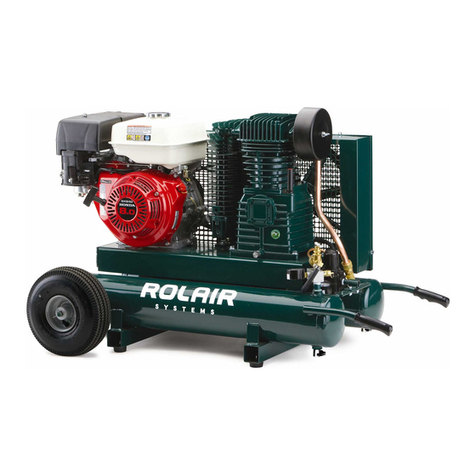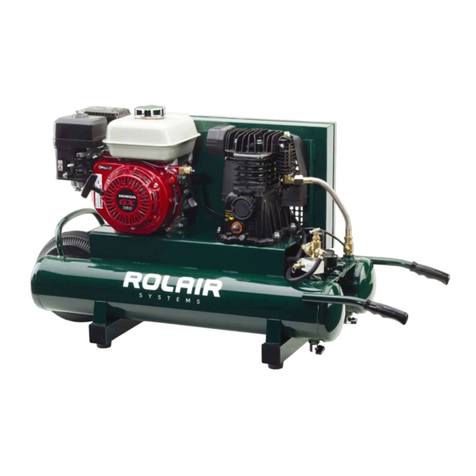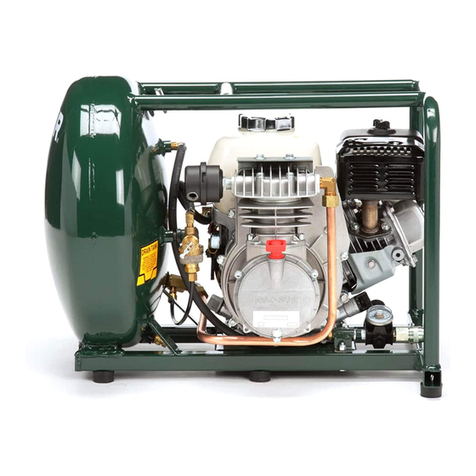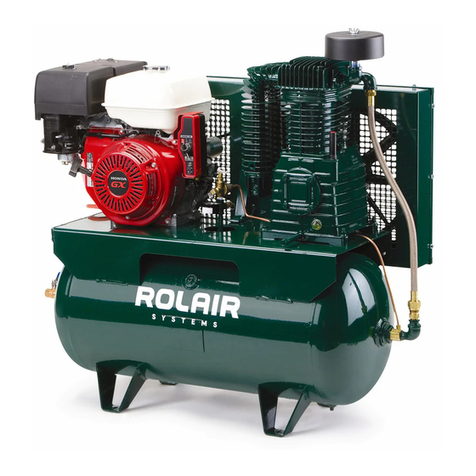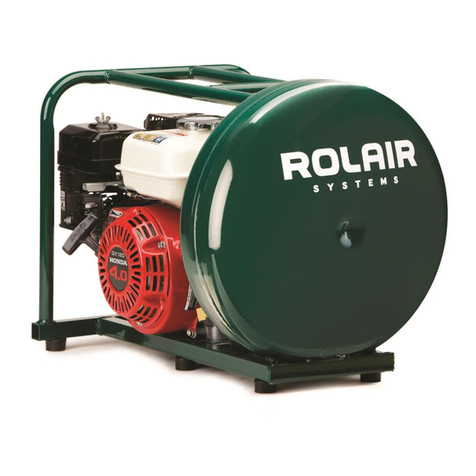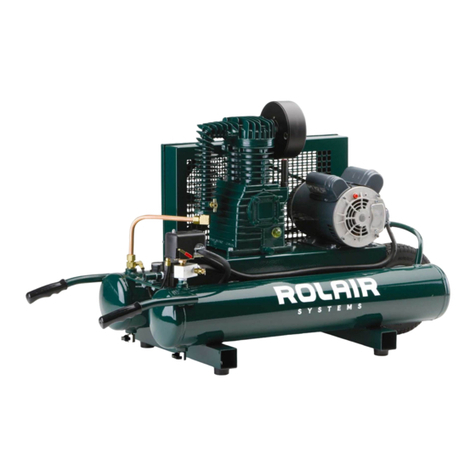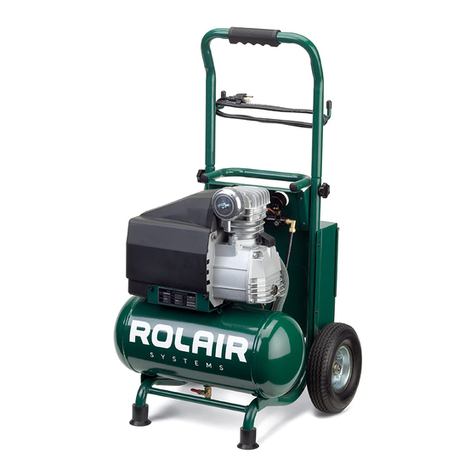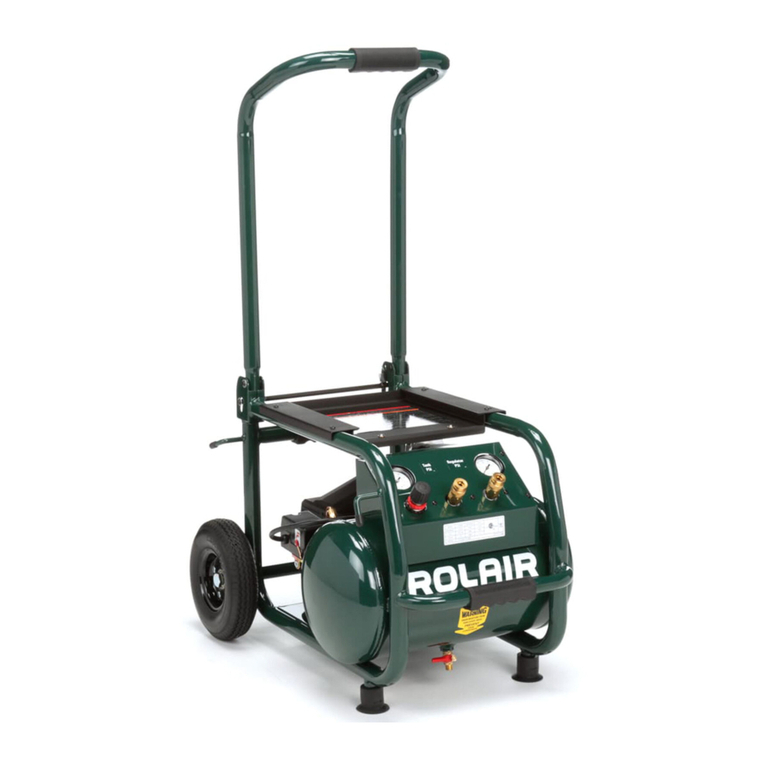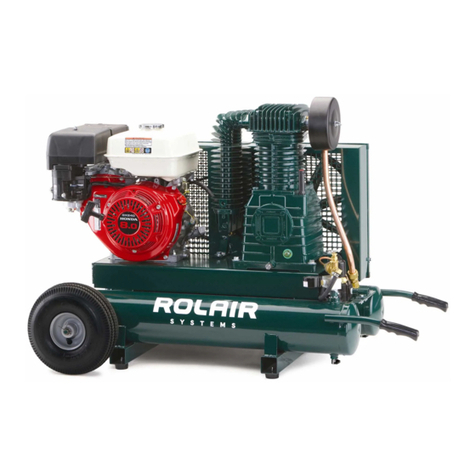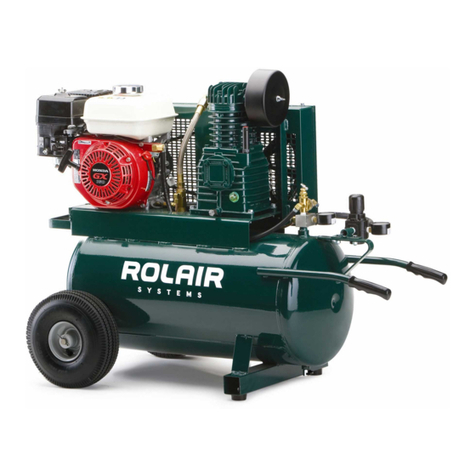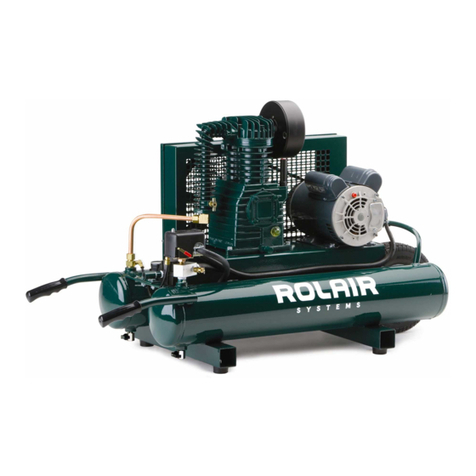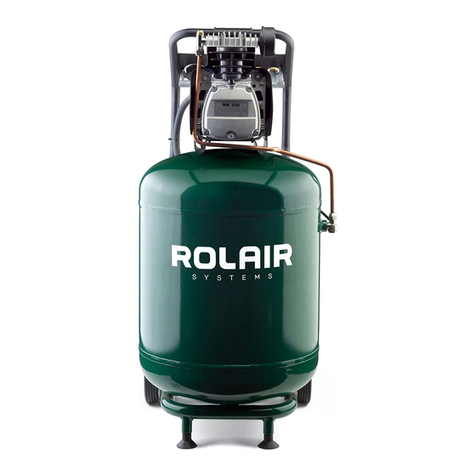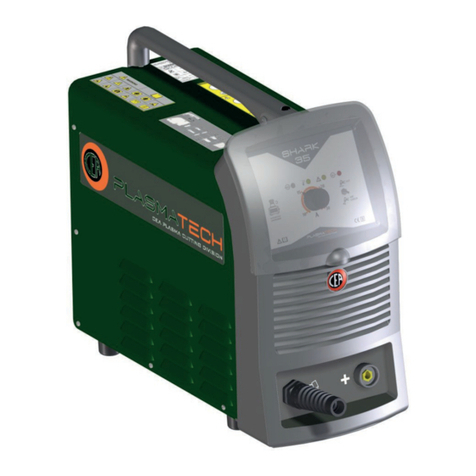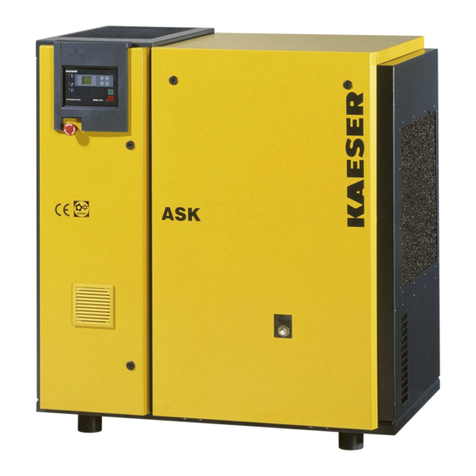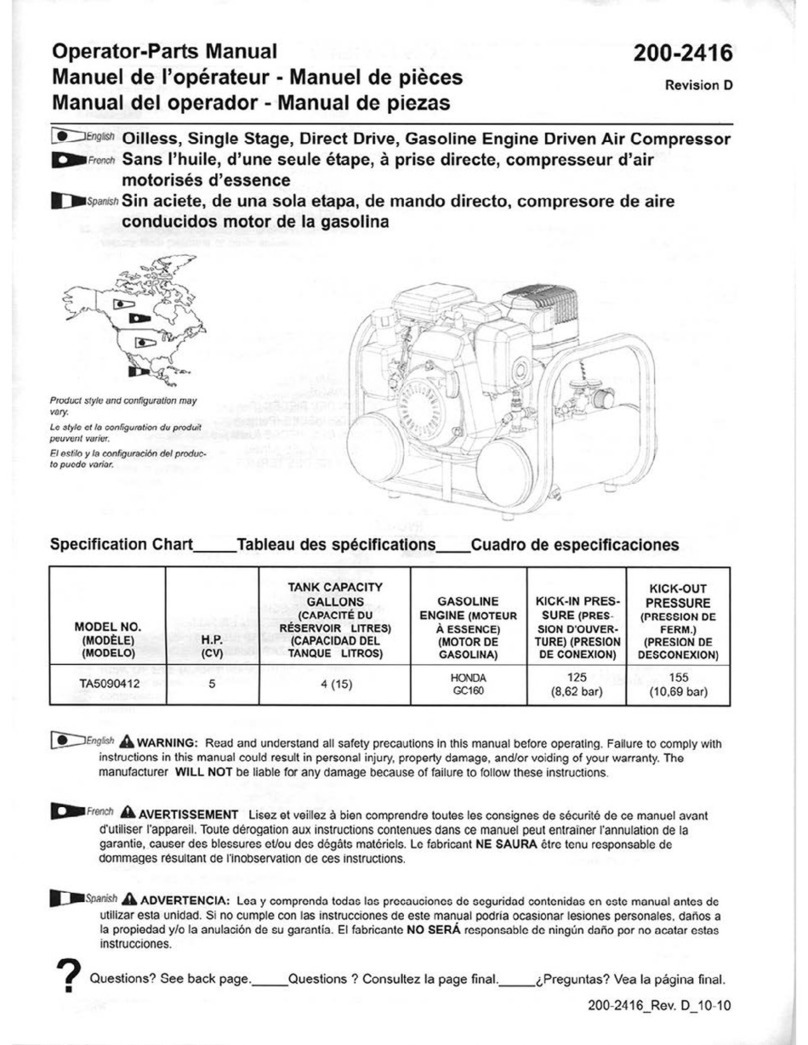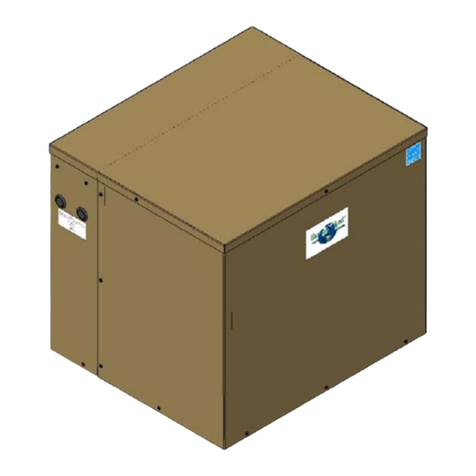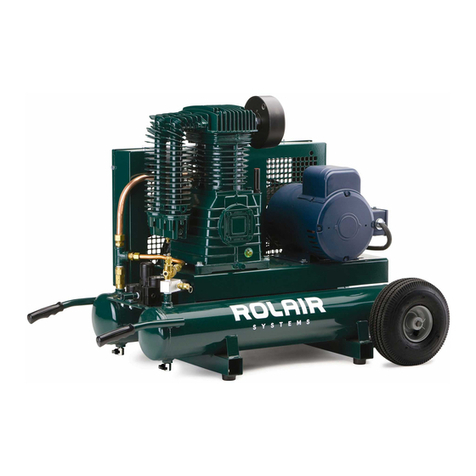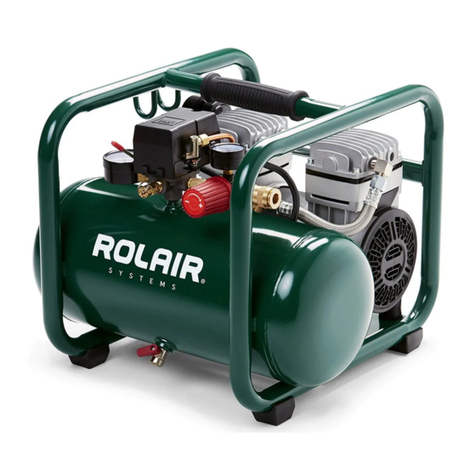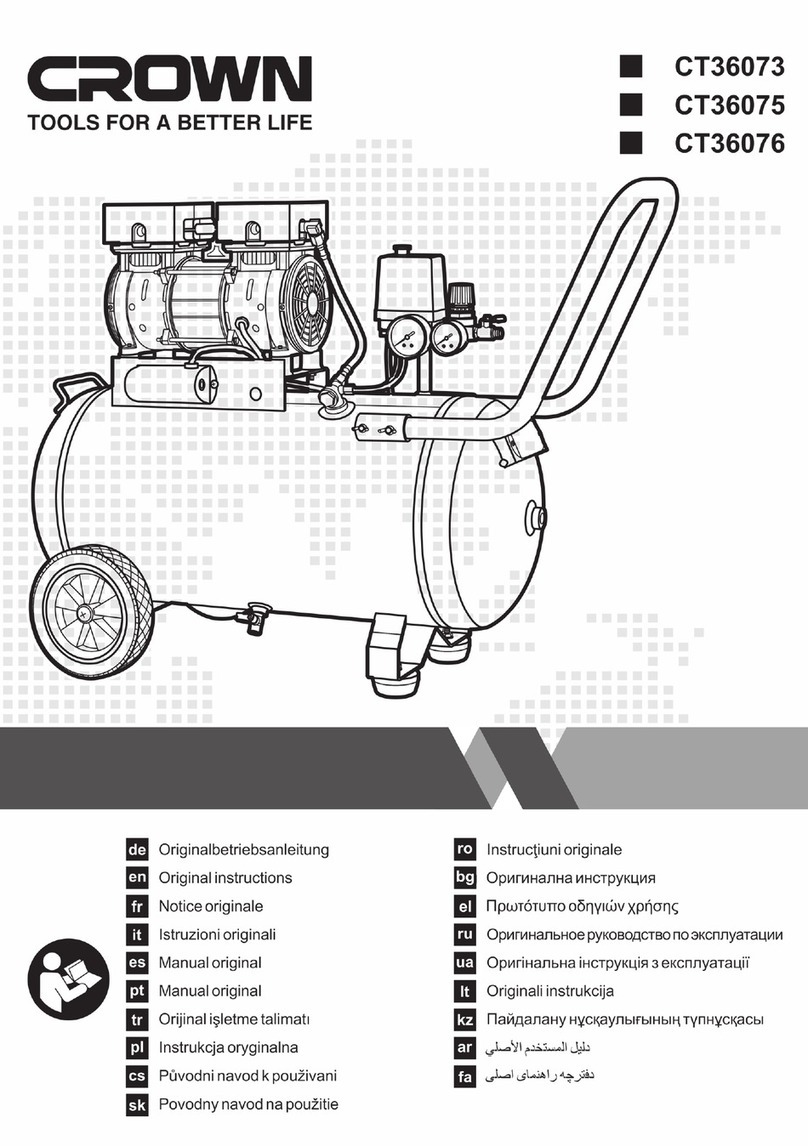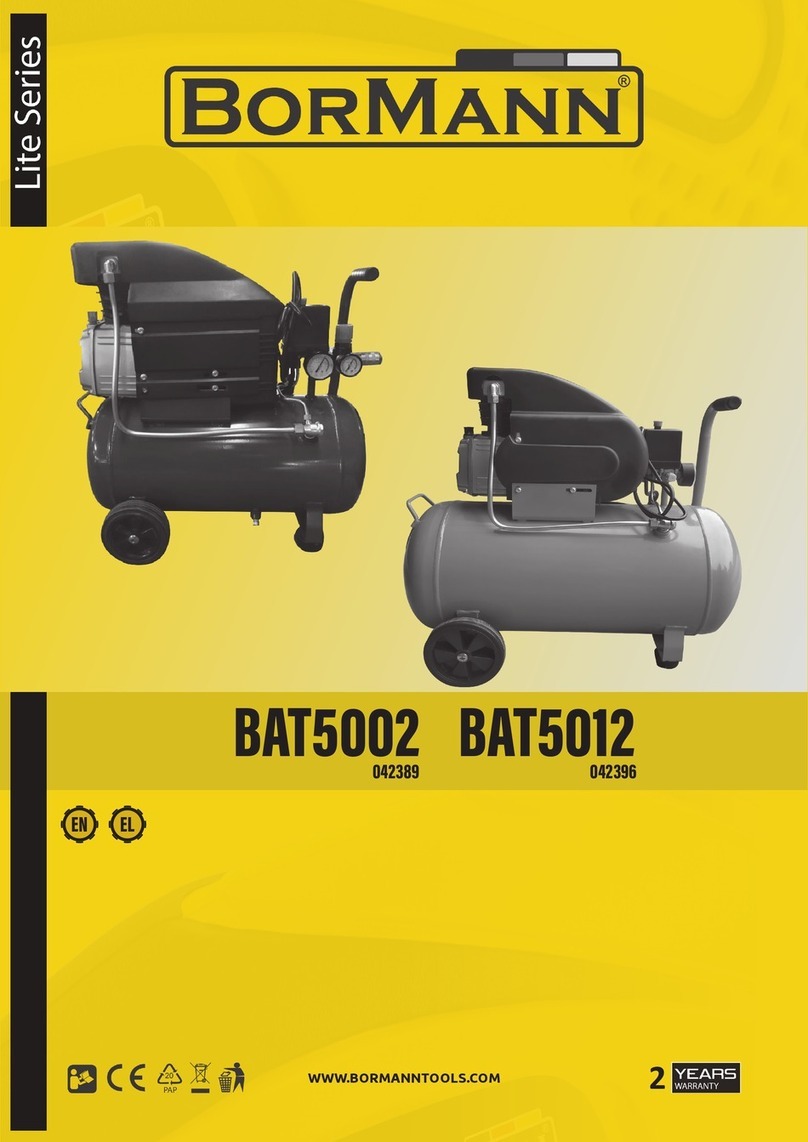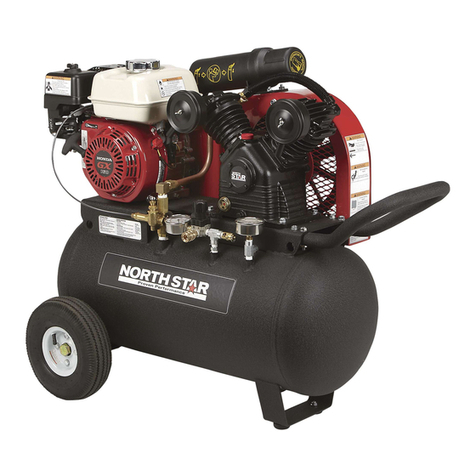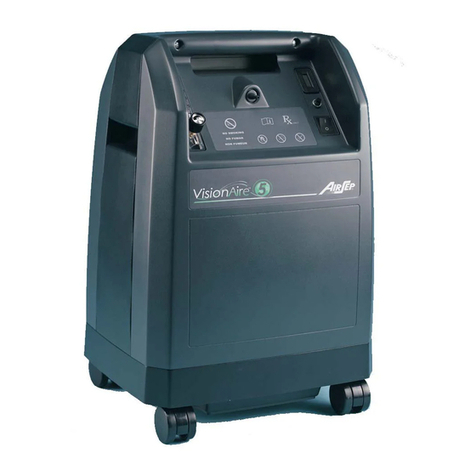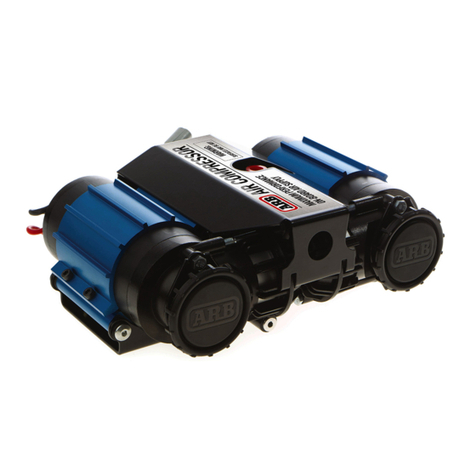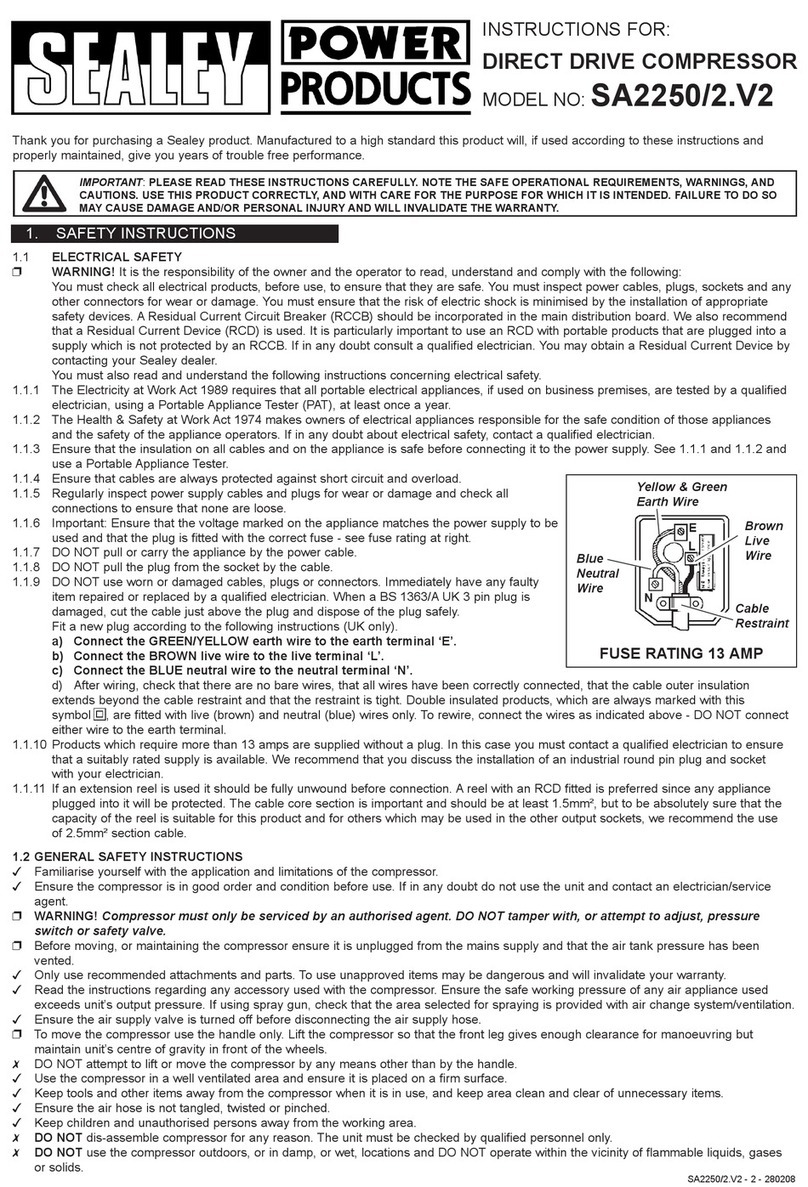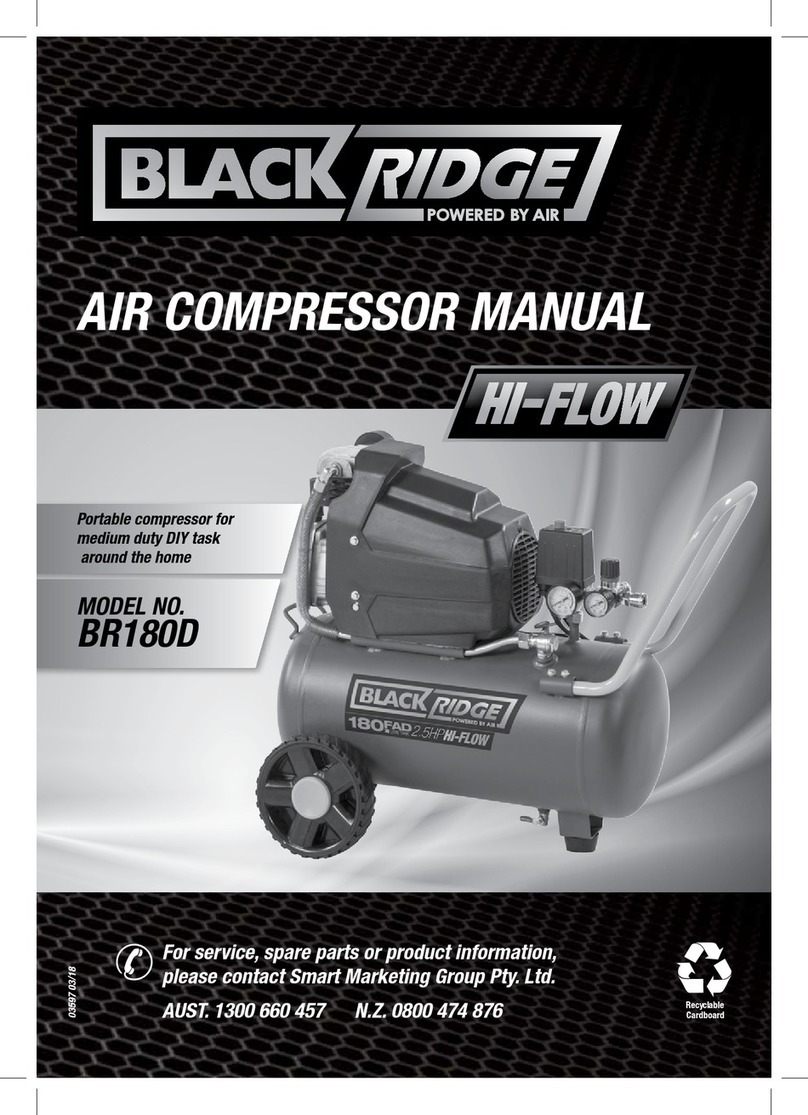
- 3 -
Hazard Level Potential of Hazard How to Avoid Hazard
Risk of Asphyxiation
Serious injury or death may occur from
inhaling compressed air. The air stream may
contain carbon monoxide, toxic vapors, or
solid particles.
Never inhale compressed air directly from the
pump, receiver, or from a breathing device
connected to the air compressor.
Sprayed materials such as paint, stucco,
insecticides, solvents, etc. contain harmful
vapors and poisons that may cause serious
injury or death if inhaled.
Operate compressor only in a well-ventilated
area. Use a respirator device and follow the
manufacturer’s recommendations for their
spray equipment. Keep compressor at least
25 feet away from spray equipment.
Serious injury or death may occur if the
exhaust from gas-powered small engines is
inhaled. Engine exhaust fumes contain
poisonous, carbon monoxide which is odorless
and colorless.
Operate gas-powered compressors only in a
well-ventilated area. Avoid inhaling engine
exhaust fumes, and never run a small gas-
powered engine in a closed building or
confined area without adequate ventilation.
Risk of Bursting
Serious injury or death may occur from an air
tank explosion if the air tanks are not properly
maintained or if modifications, alterations or
repairs are attempted to the air receivers.
Drain air tanks daily or after each use. Never
drill into, weld, patch or modify the air tanks.
If a leak develops, replace the tank
immediately or replace the entire compressor.
Serious injury or death may occur if
modifications are made to the pilot unloader
valve, pressure switch, safety relief valve or
other components that control the tank
pressure.
Never make adjustments to the components
that control tank pressure. Do not make
alterations to the factory operating pressure
settings. Check operation of the safety valve
on a regular basis and never operate without a
factory approved safety valve.
Serious injury may occur if accessories or
attachments are operated above the
manufacturer’s recommended pressure
ratings, causing them to explode or fly apart.
Do not use air tools or attachments before
reading the owner’s manual to determine the
maximum pressure recommendations. Never
exceed the manufacturer’s maximum
allowable pressure ratings. Do not use
compressor to inflate small low pressure
objects such as toys.
Risk of Electrocution or
Electrical Shock
Serious injury or death could occur if the air
compressor is not properly grounded.
Always plug compressor into a properly
grounded outlet which provides correct
voltage, proper grounding and adequate fuse
protection.
Electrical shock may occur if compressor is
not properly operated.
Never operate air compressor in wet
conditions or outdoors when it’s raining. Do
not allow electric cords to lay in water. Do not
operate with damaged power cord or with
protective electrical covers removed. Do not
touch plug with wet hands. Do not pull on
electric cord to disconnect from the outlet.
Serious injury or death may occur if electrical
repairs are attempted by unqualified
personnel.
Any electrical repairs or wiring performed on
this compressor should only be performed by
authorized service personnel in accordance
with the National and Local Electric Codes.
Risk of Explosion or Fire
Serious injury or death may result from normal
electrical sparks that occur within the motor
and/or pressure switch.
Always operate compressor in a well-
ventilated area free of combustible materials,
gasoline, flammable solvents or vapors.
Always locate compressor at least 20 feet
away from work area if spraying flammable
materials.
Serious injury may occur if a fire is caused by
overheating due to inadequate ventilation or
restrictions to any of the compressors
ventilation openings.
Never place objects against or on top of an air
compressor. Always operate air compressor
at least 18” away from any wall or obstruction.
Always operate in a clean, dry and well-
ventilated area.
Serious injury or death may occur from a fire
or explosion if spilled gas or vapors come in
contact with hot engine parts and ignite.
Never attempt to fill the gas tank while the
engine is hot or running. Add fuel outdoors in
a well-ventilated area. Do not fill gas tank near
lit cigarettes or near other sources of ignition.
SAFETY WARNINGS
WARNING
The engine exhaust from this product
contains chemicals known to the State
of California to cause cancer, birth
defects or other reproductive harm.
READ AND UNDERSTAND ALL SAFETY WARNINGS BEFORE USING AIR COMPRESSOR


















